Ornamental Flowering Pear
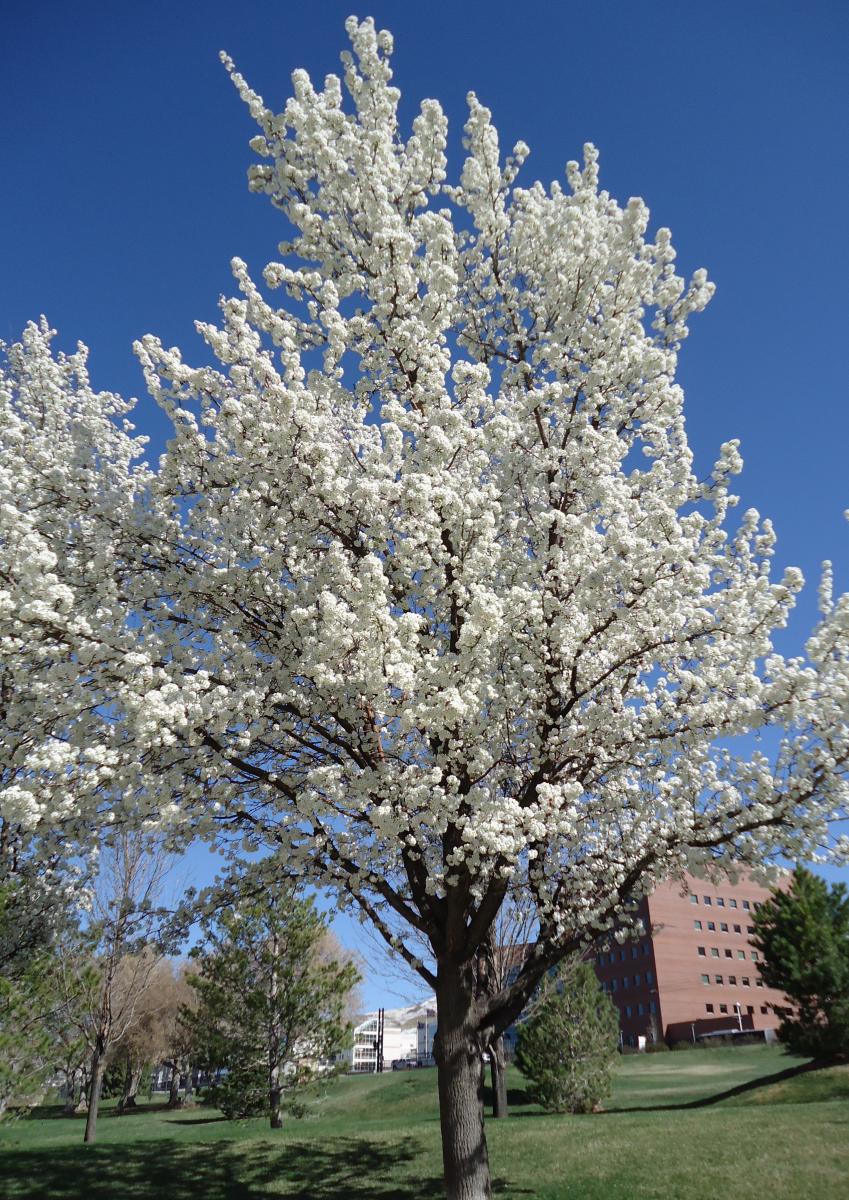
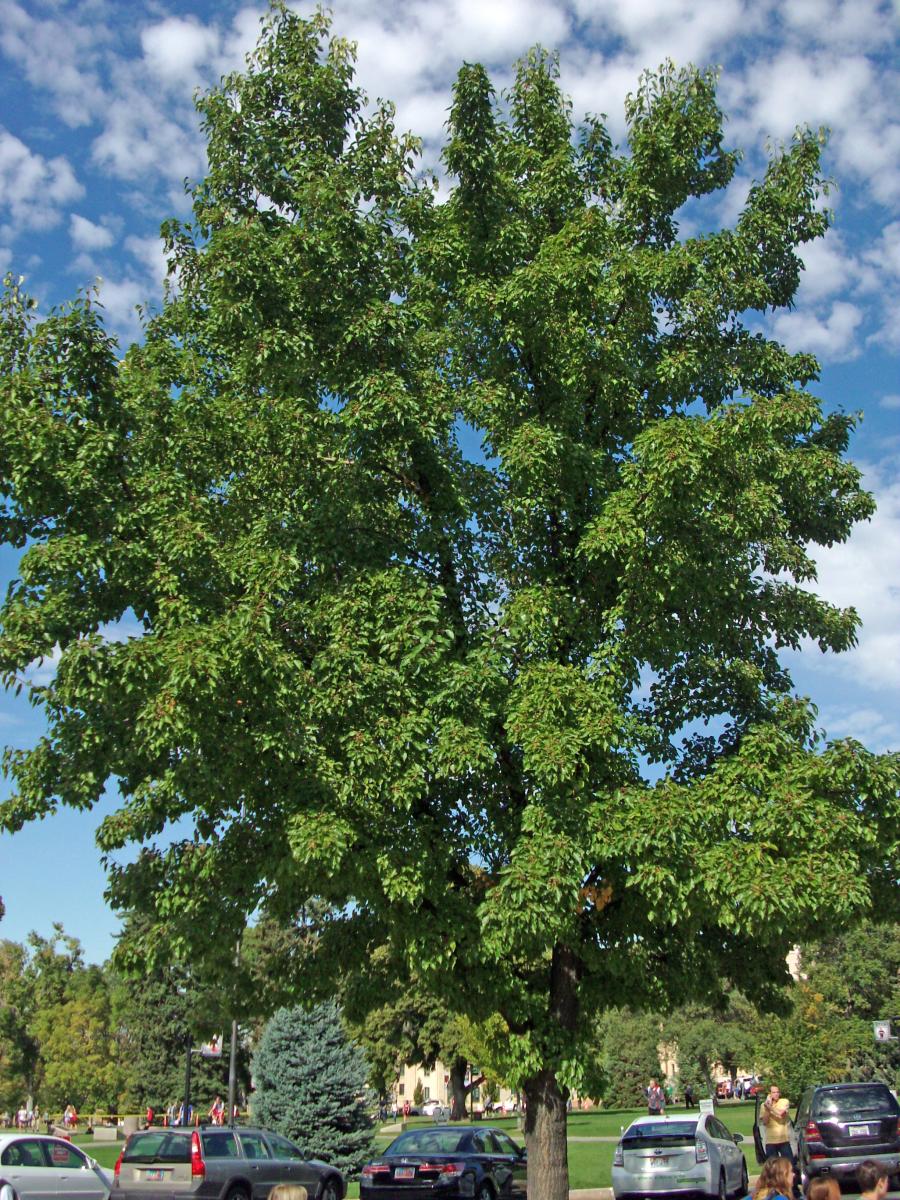
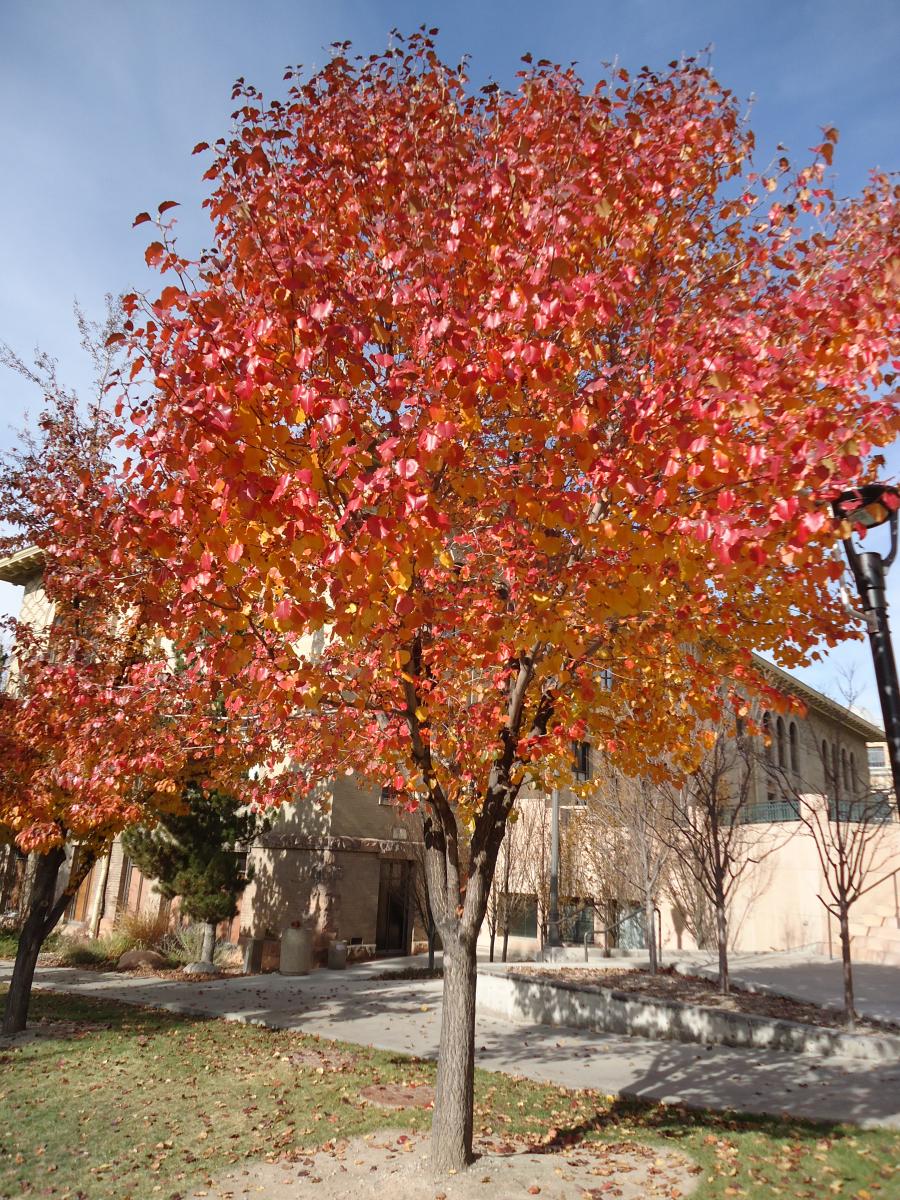

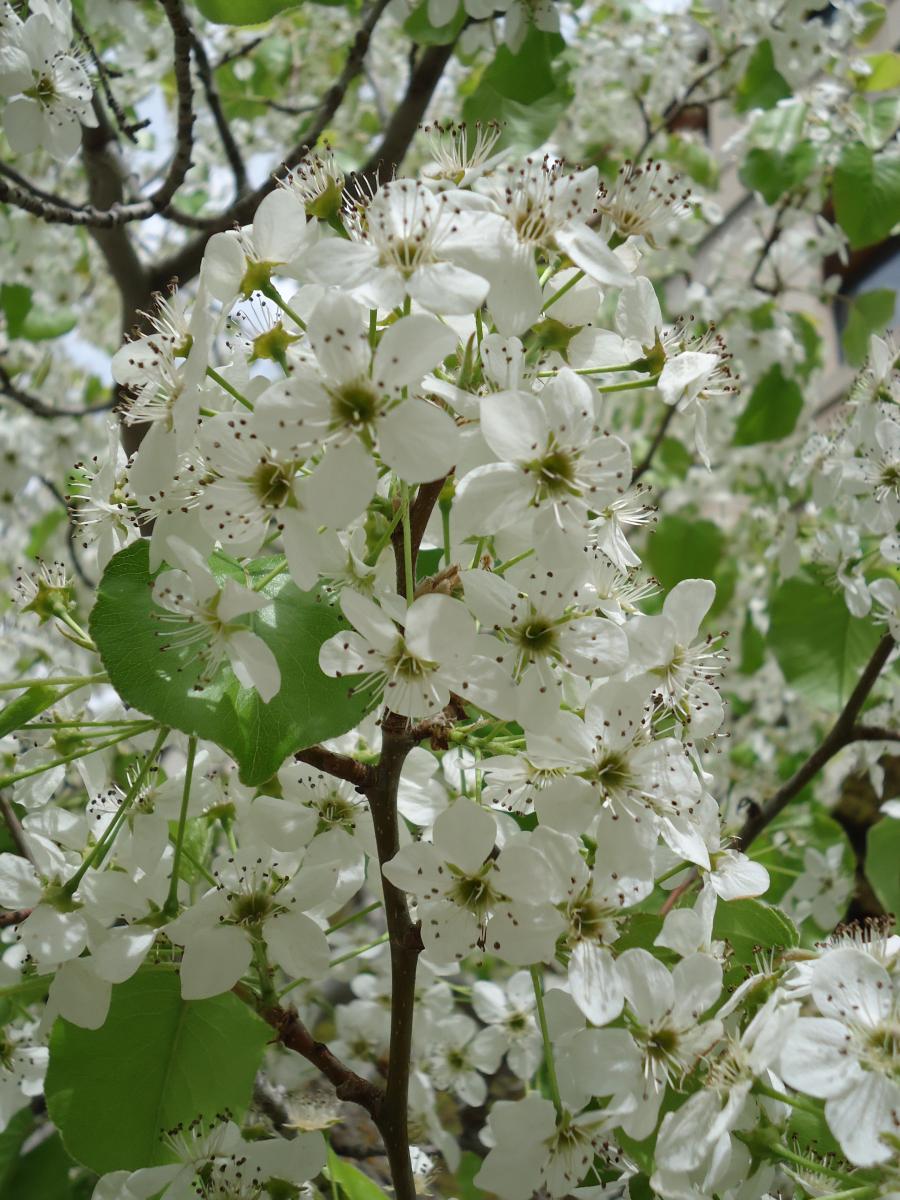
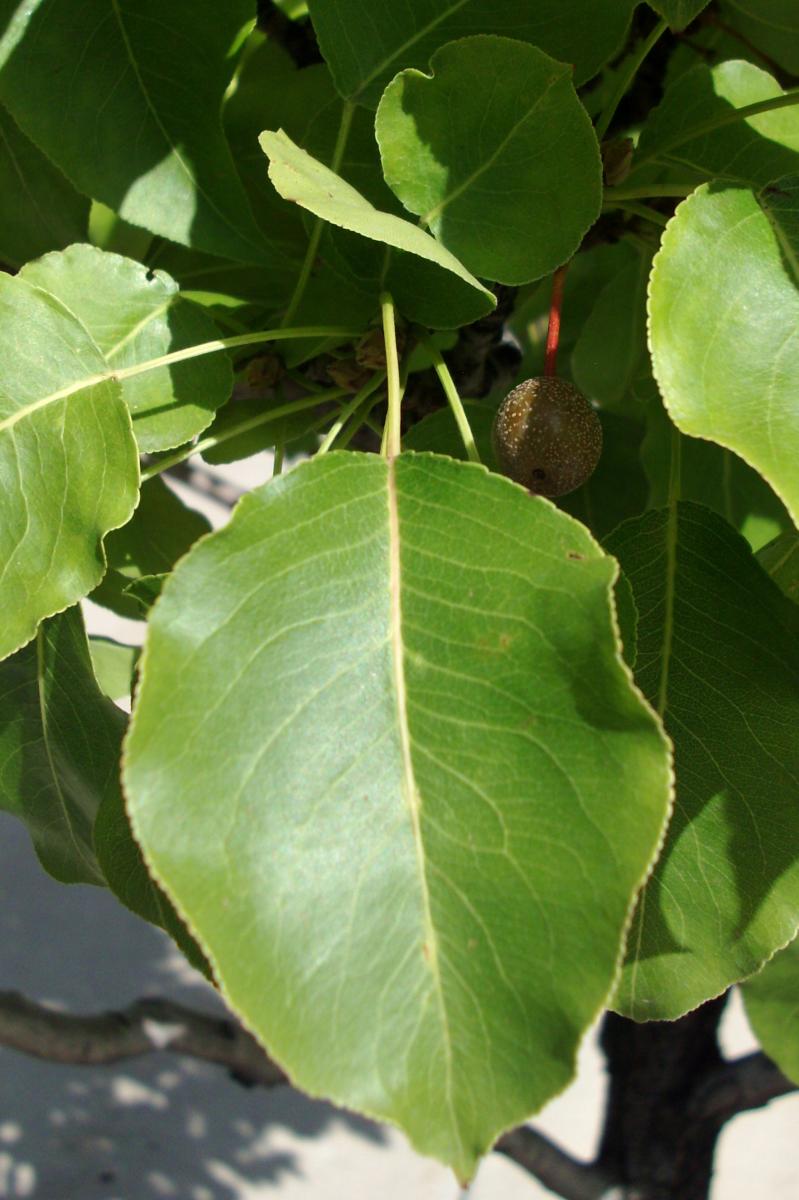
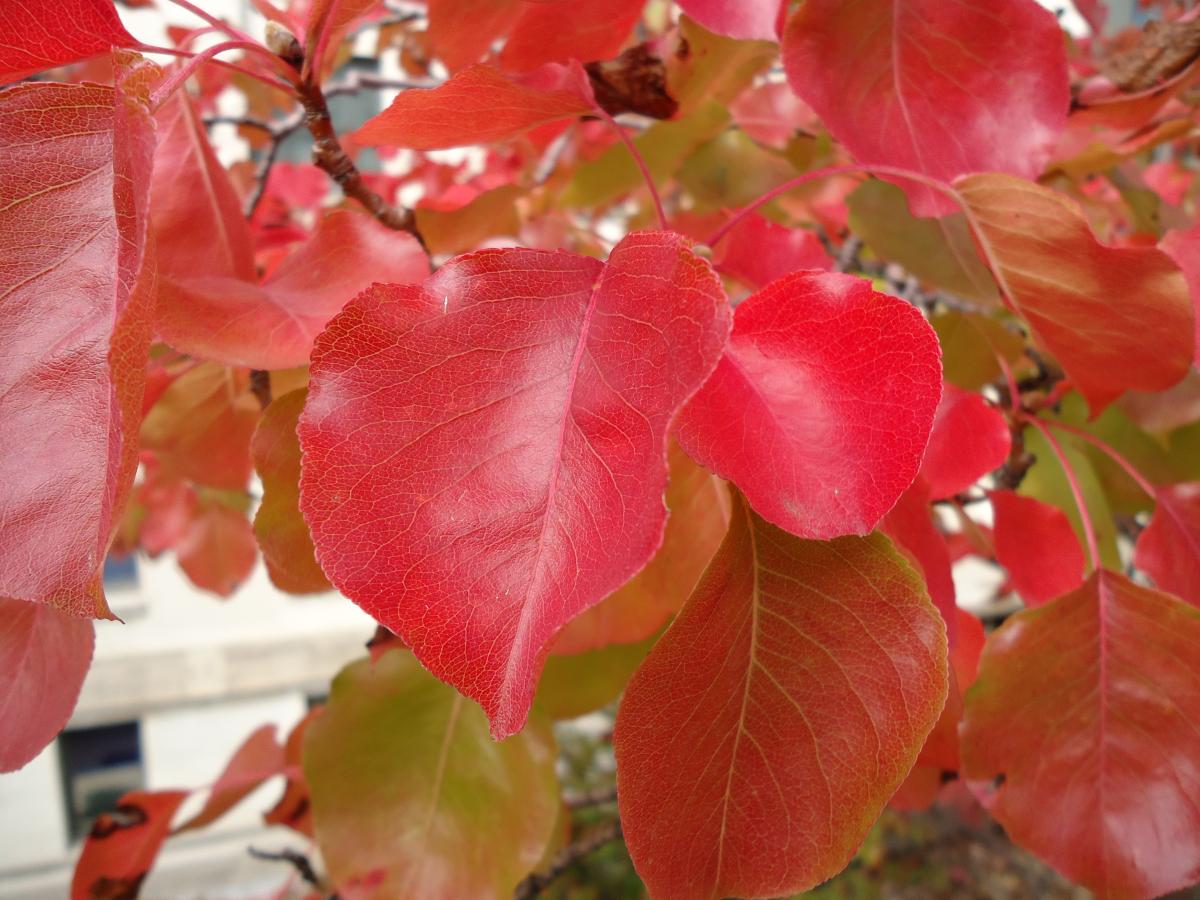
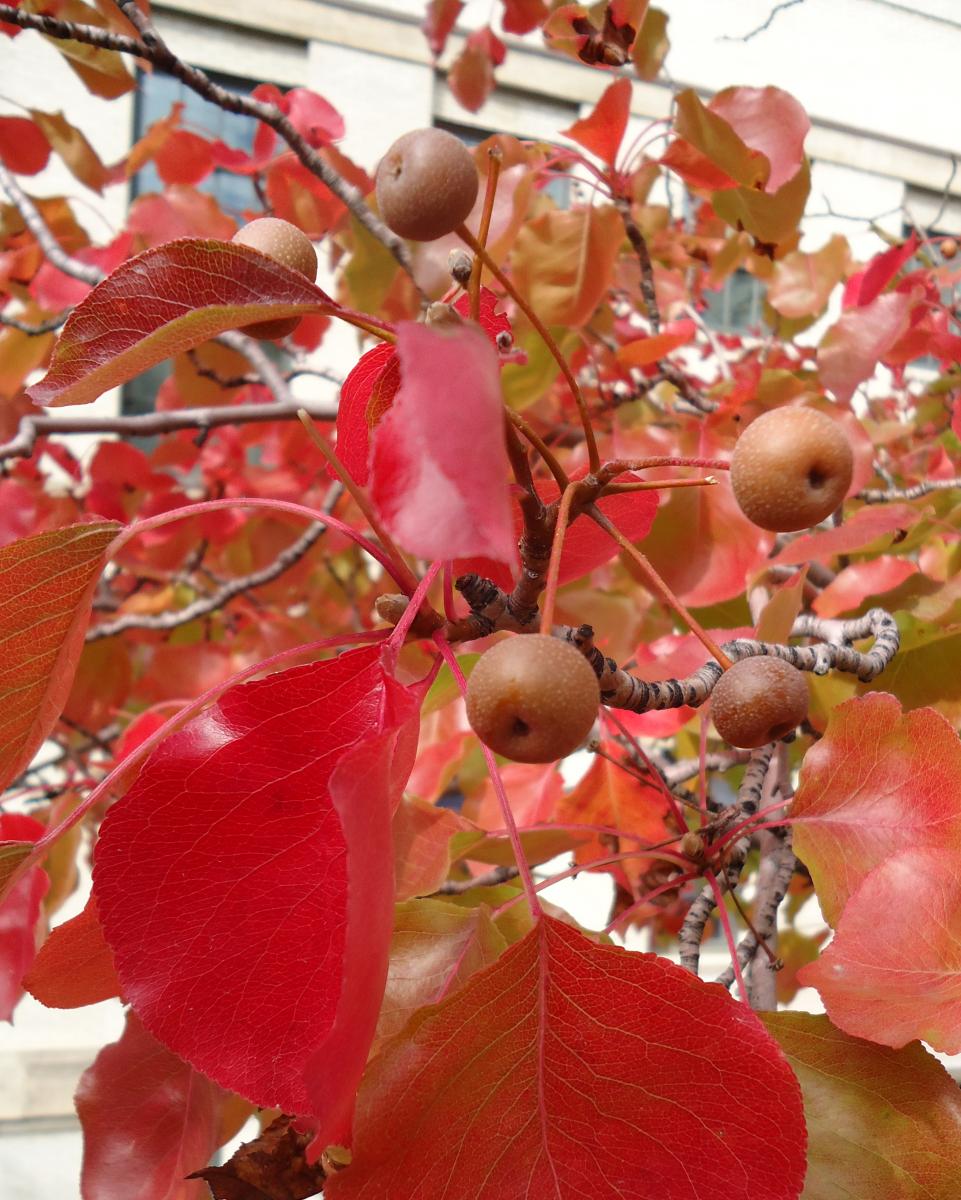
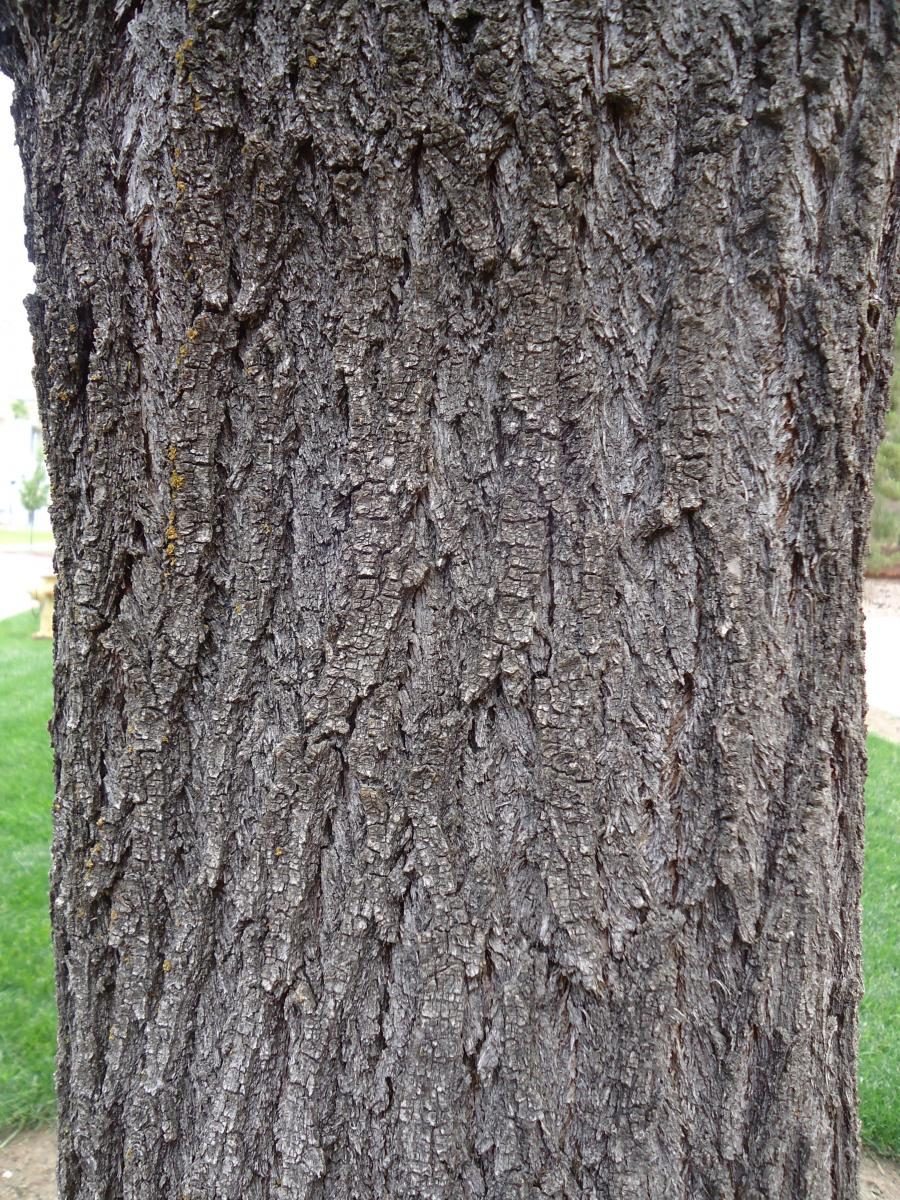
Pyrus calleryana
Leaves: Deciduous. Leaves 1½ to 3 inches long and nearly as wide. Rounding to oval leaf shape with a fairly narrow point at the tip. Short, blunt serrations cover the leaf edge. Dark glossy green color. Fall color is exceptional with the tree gradually changing to reds, purples, oranges, and yellows.
Bark/Twigs: Brownish and smooth bark on younger stems. Forms ridges and is darker gray-brown on older wood.
Flowers/Fruit: White, 3 inch clusters of flowers. Flowers are ½ to 1 inch diameter and have five-petals. Flowers in spring (April). Small, ½ inch red-brown fruits persist through much of the winter and attract birds.
Mature size and shape: Medium. 30 to 50 feet high x 20 to 30 feet wide. Conical to rounded crown. Moderately pyramidal. Top rounds out and tree loosens/opens with age.
General information/special features: Plant in full sun. Adapts to moist as well as dry soil conditions. Moist, well-drained soil is best. Tolerates pollution and dryness.
Landscape use and maintenance: Good ornamental tree. This tree is commonly used as a focal point or street planting. Fast growing rate. Average maintenance. It is prone to have weak branch attachments and can split out during storms and wind. Easy to transplant if moved in late winter or early spring. Prune in winter.
USDA Hardiness Zone: 5 to 8
Family/Origin: Rosaceae – Rose. Native to China and Korea. Brought to the U.S. in 1917 from China for hybridization experiments aimed at improving fireblight resistance for the common fruiting pear (P. communis).
Campus Use: Extremely common. Can be found around circumference of President's Circle.
